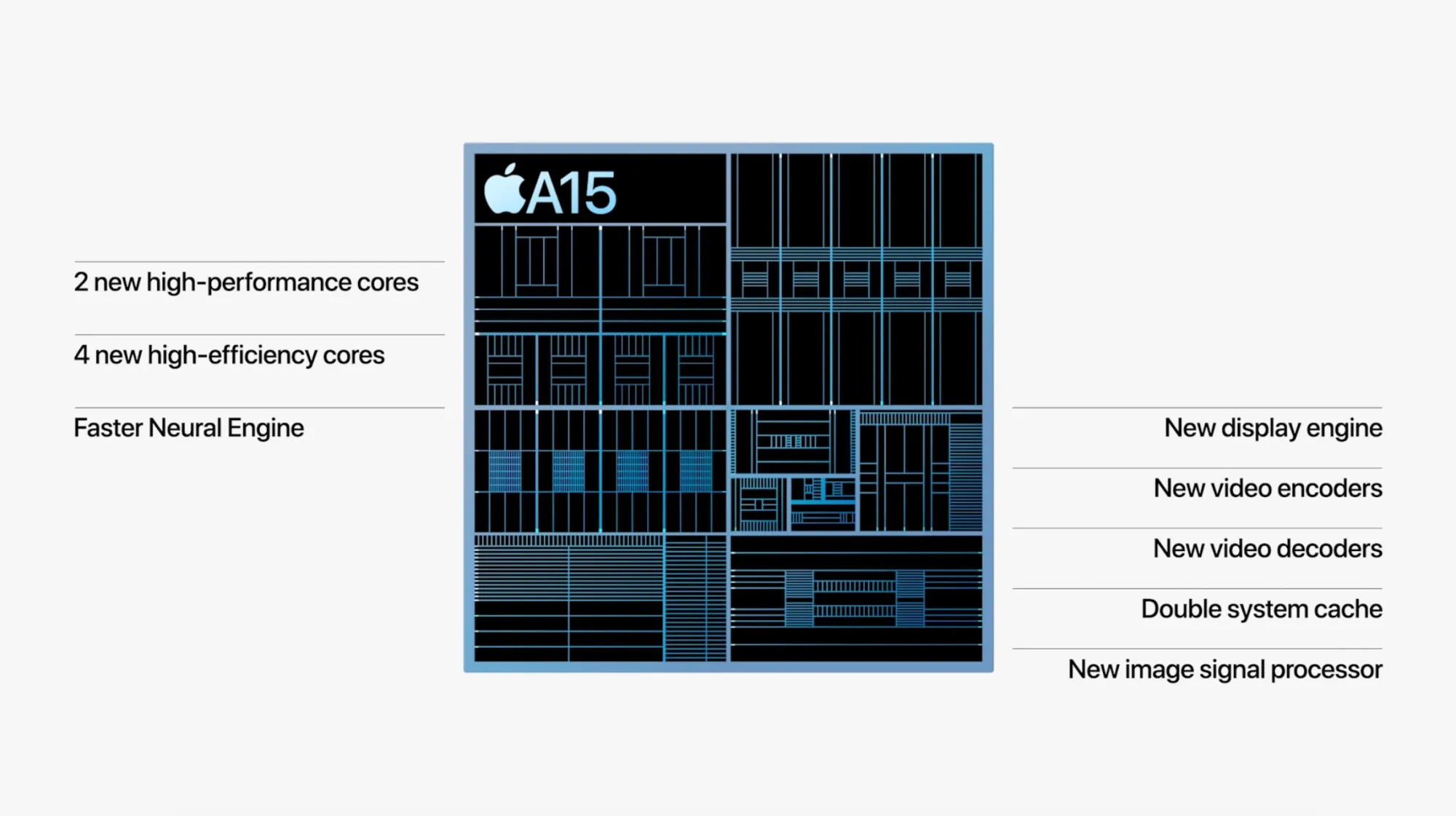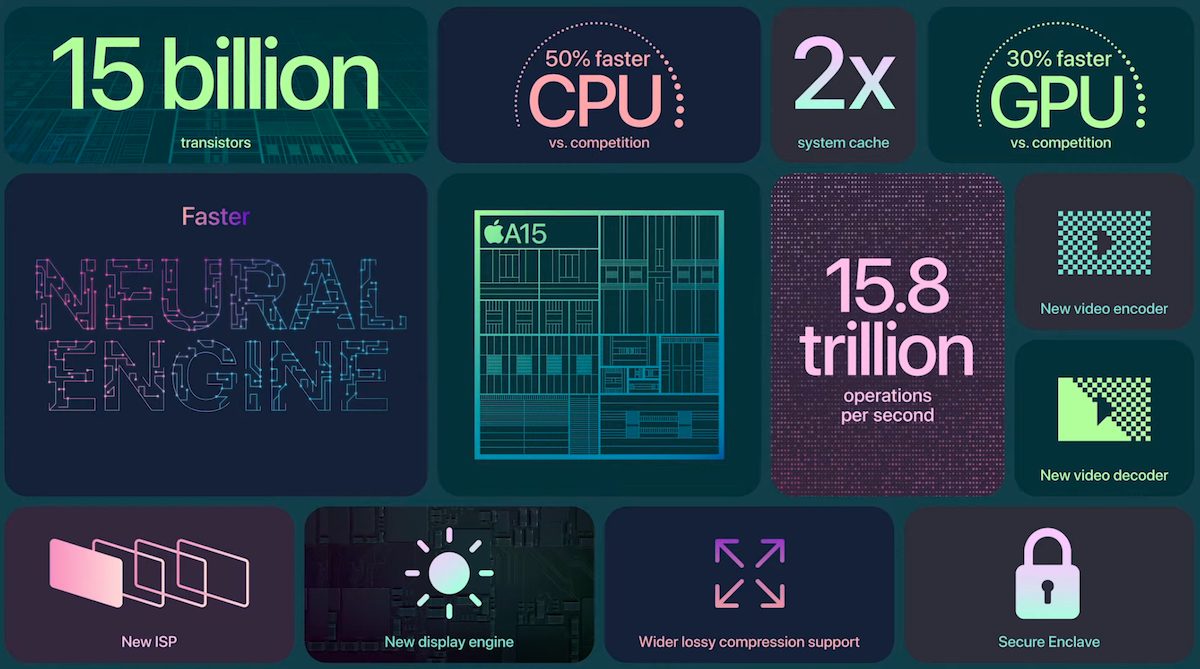Here is everything you need to know about the new A15 Bionic chip that is being used in iPhone 13, iPhone 13 mini, iPhone 13 Pro, and iPhone 13 Pro Max.

A15 Bionic specifications
A15 Bionic chip is a 6-core chip with 2 high-performance cores and 4 high-efficiency cores, built on the 5nm process and contains 15 billion transistors. The Neural Engine has been upgraded over its predecessor and is capable of 15.8 trillion operations per second. The chip also has a larger system cache that is twice the size of the one in the A14 chip. Apple has also included the following changes in the A15 chip:
- New ISP
- New display engine
- New video decoder
- New video encoder
- Wider lossy compression support
All these improvements mean that features like Live Text, Face ID unlock and photo and video capture are faster than ever before.
The A15 chip in iPhone 13 and iPhone 13 mini feature four GPU cores, while iPhone 13 and iPhone 13 Pro feature five GPU cores. This is likely due to 120Hz ProMotion support in iPhone 13 Pro models, as well as features like ProRes video capture. The GPU in A15 chip gives iPhone 13 30% more performance than the competition, and the additional GPU core in iPhone 13 Pro gives it 50% more performance than the competition.

Apple said during the iPhone 13 announcement that the new A15 Bionic chip is 50% faster than the fastest chip from competitors, however, it turned out to be an extremely vague comparison. The company has a habit of showing a graph of how its silicon performance has improved ever since the first iPhone and it always shows healthy growth. But this year, Apple oddly omitted the comparison which has people questioning the performance improvements.
Although Apple did not name the competition, it is likely Qualcomm Snapdragon 888, which is used in most flagship Android smartphones.
Due to the switch from 7nm to 5nm process node, A14 chip had a 20% performance improvement over A13, which was a big deal. Since the process node is the same for A15 chip, a repeat of such performance improvements is unexpected.
An interesting from SemiAnalysis blames this on the personnel turnover at Apple. Many employees from Apple’s chip team have exited the company and created companies like Nuvia, which was recently acquired by Qualcomm for $1.4 billion. Another company, Rivos Inc, was also created by former Apple engineers. This brain drain is still continuing and SemiAnalysis believes that Apple had to delay its next-generation CPU core and use a modified version of last year’s CPU core.
AnandTech also did some number crunching based on Apple’s claims, and it seems that the CPU performance improvement might only be around 6%:
Here, they’re claiming that the new A15 will be +50% better than the next-best competitor. The next-best competitor is Qualcomm’s Snapdragon 888 – if we look up our benchmark result set, we can see that the A14 is +41% more performant than the Snapdragon 888 in SPECint2017 – for the A15 to grow that gap to 50% it really would only need to be roughly 6% faster than the A14, which is indeed not a very large upgrade. Apple also didn’t comment on any new ISA features such as Armv9/SVE2, so it seems that the CPU doesn’t feature it?
However, this is all speculation, and the reality might be somewhere in between. Apple has shared massive improvements in battery life across all iPhone 13 models, so it is possible that the company focused more on efficiency this year. Until reviewers like AnandTech get their hands on the new devices, take any opinions with a grain of salt. No matter what the delta of performance improvements is, A15 is enabling a lot of powerful new features: Photographic Styles, Cinematic Mode, 4K ProRes Video, and more.
5 comments
Comments are closed.